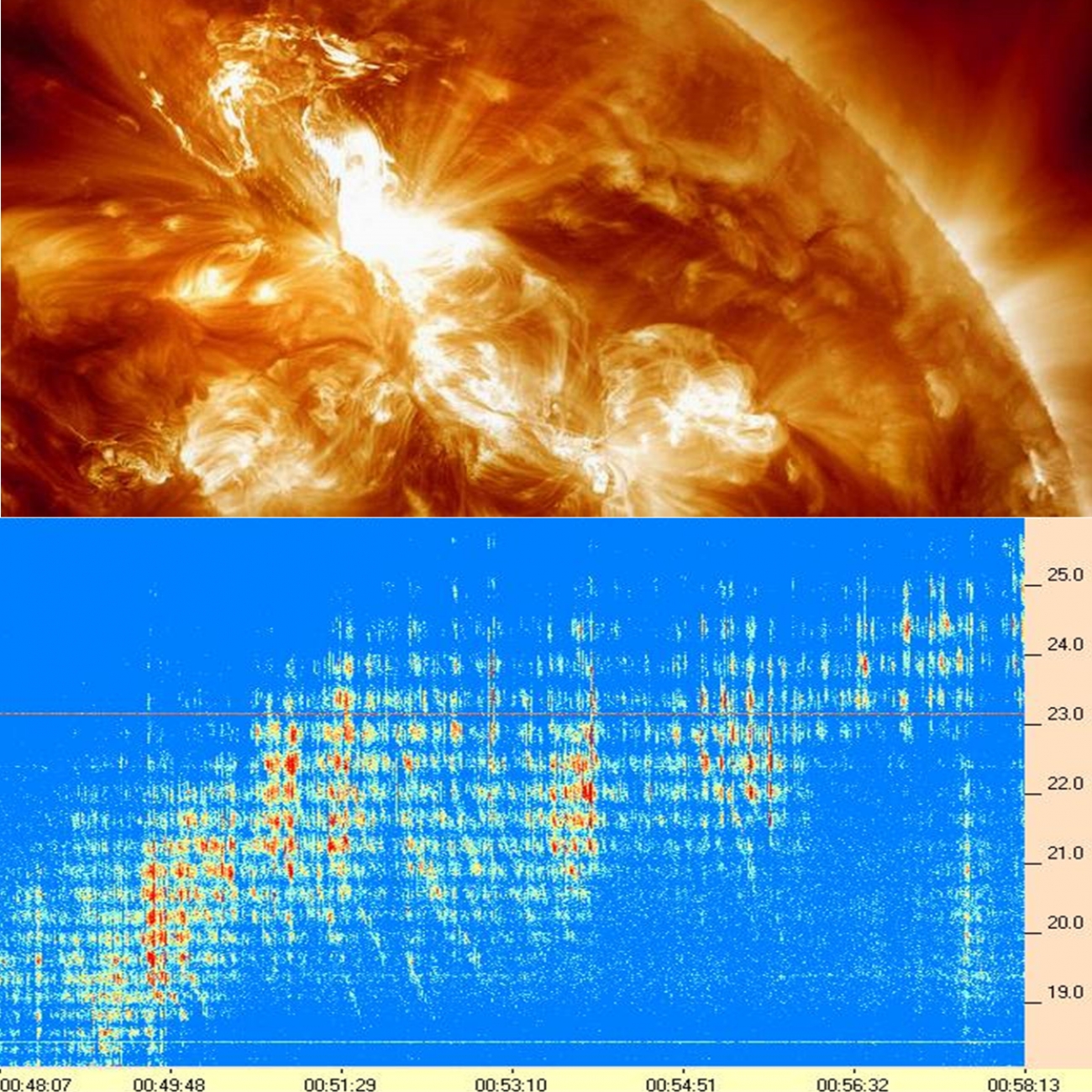A good frequency to start with is 20.1MHz, the same frequency that used for Jupiter. Near that frequency, the burst turns on rapidly as increasing in the radio galactic background noise then decay slowly. On graphs, the typical solar radio burst has a “shark fin” or inverted “V” shape, and often last for tens of seconds.
The Sun has an approximate 11-year cycle of activity, which is measured by the number of visible sunspots. The last cycle ended in May 2020, while the current one (Solar Cycle 25) is off to a slow start but as it progresses.
In SAASST, one of the main tasks in the Radio Astronomy Laboratory is monitoring and studying the solar radio bursts through two dipole arrays are designed to receive the decametric radio emission in 20.1 MHz.



